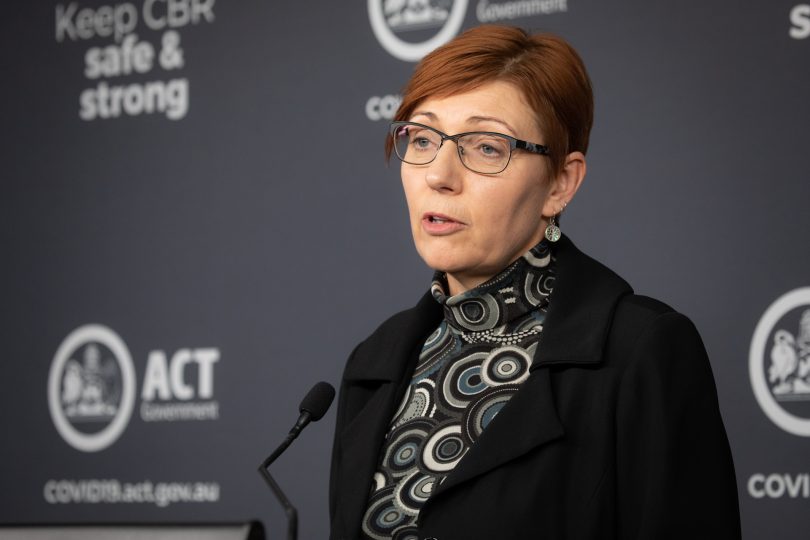
Melbourne and Sydney have already established safe injecting sites. Photo: File.
Drug and alcohol reform advocates say a supervised injecting site will save lives.
The Territory might be a progressive jurisdiction when it comes to most elements of drug policy by decriminalising small amounts of substances – including ice, cocaine, heroin and cannabis – and setting up pill testing.
But despite the fact the ACT last year recorded the highest number of drug-induced deaths per capita in the country, it’s yet to set up an injecting room.
And it’s unlikely there will be one until after 2024, the ACT Government today conceded. Despite it committing to “working” on establishing one.
A trial for safe injecting rooms was first floated in the Territory by former health minister Michael Moore. That was quashed by the Federal Government – and there’s still no timeframe for when it will be operational.

Health Minister Rachel Stephen-Smith has recommitted to working on setting up a safe injecting site. Photo: Michelle Kroll.
It also found such a room had the backing of those who used drugs.
But Ms Stephen-Smith said at the time the government would need to consult with the community before making a decision.
Labor and the Greens committed to piloting a “safe drug consumption site” in their 2020 power-sharing agreement.
In a statement, Ms Stephen-Smith said the government would continue to work through issues relating to establishing a facility.
She didn’t elaborate on those issues.
Drug users were supervised in injecting rooms, Dr Devin Bowles of the Alcohol Tobacco and Other Drugs Association (ATODA) explained.
It means someone is on hand to assist if drugs are laced with a dangerous substance such as fentanyl, users take the wrong dosage, or haven’t used drugs in a while and react differently.
No-one has died in an injecting room in Melbourne and Sydney where centres have been operating since 2018 and 2001 respectively.
Drug users can also begin to interact with the health system in a positive, non-judgmental way.
“Supervised consumption rooms are also places where people can have conversations about other things they can do to reduce health risks from drug use,” Dr Bowles said. “And even think about reducing or stopping drug consumption if that is what they want.”
Dr Bowles is particularly keen to see an injecting room set up as the insidious presence of fentanyl continues in other drugs overseas, particularly in the United States.
He’s concerned Australia will soon experience the same challenge from the deadly substance.
But he acknowledges there is always some reticence when it comes to where a supervised site will be set up.
“A supervised consumption room should be located where it is easily accessible. People who use drugs live across the ACT and are often reliant on public transport,” he said.
“If people can’t attend a supervised consumption room easily, the number of people that it helps would be reduced. We want every person who is injecting drugs to be able to do so in a supervised environment.”

CAHMA executive director Chris Gough says work needs to progress on the long-promised safe injecting room. Photo: Mitch Lamb, CAHMA.
Executive director of the Canberra Alliance for Harm Minimisation and Advocacy (CAHMA) Chris Gough agreed it was time for the government to make some progress on its commitment.
He acknowledged the complexity of setting one up in Canberra compared to Sydney or Melbourne.
“In Richmond and Kings Cross, there was – and currently is – a public and visible drug scene … people overdosing and injecting on the streets so it became a public problem,” he said.
“That’s not what we have here in the Territory as there’s no street-based drug market.”
While that doesn’t mean users aren’t experiencing drug harm locally, it does raise questions about what the model of care will look like and where a centre, or centres, should be set up.
“That might mean not setting up a whole new service, which could cost a lot,” Mr Gough said. “It might mean using existing services and referral pathways to integrate an injecting facility.
“We’ve done the work. We know the community wants it and needs it and we’ve got the expertise to build it.”
The full ACT Drug Strategy Action Plan 2022-2026 is available online.





















